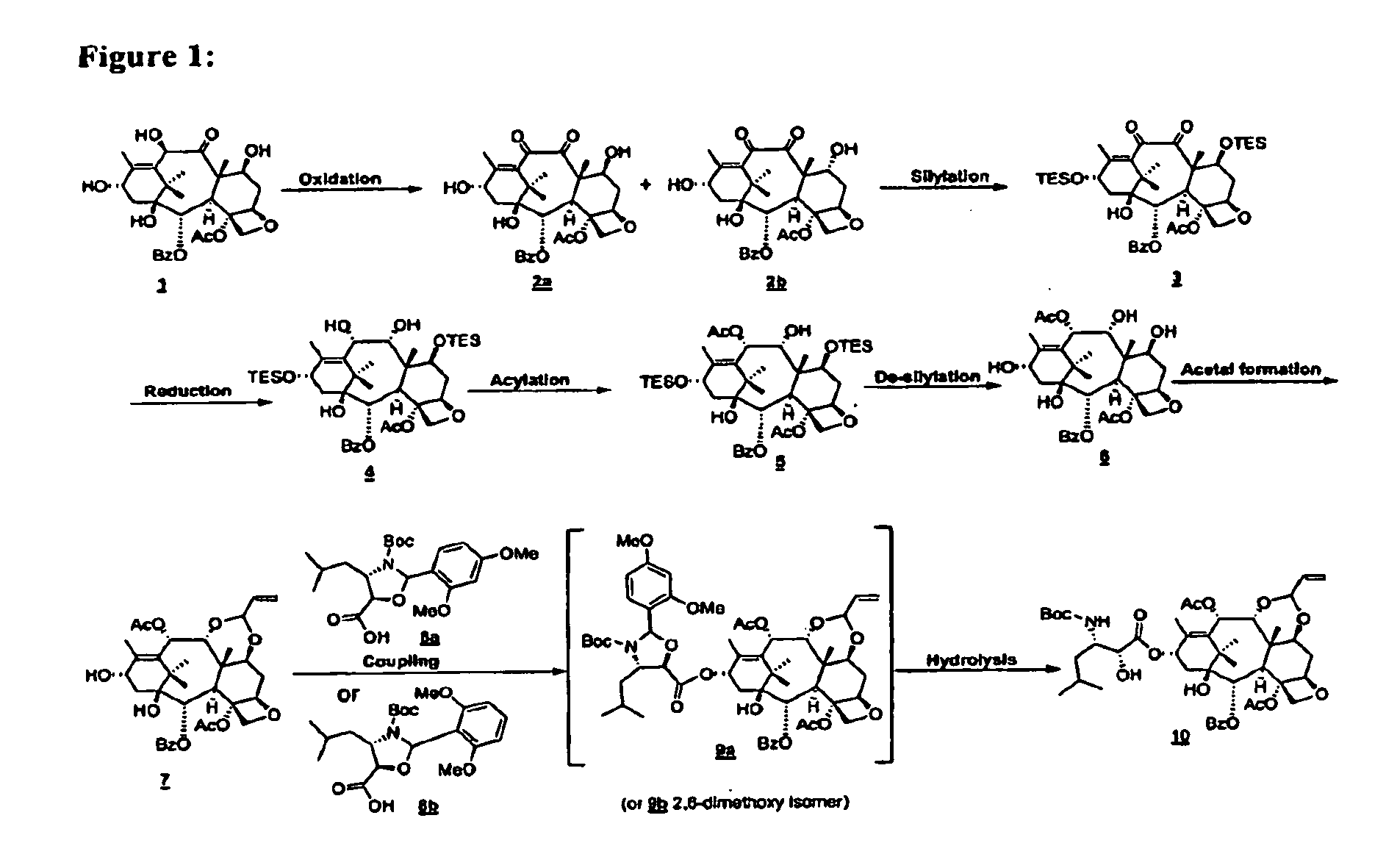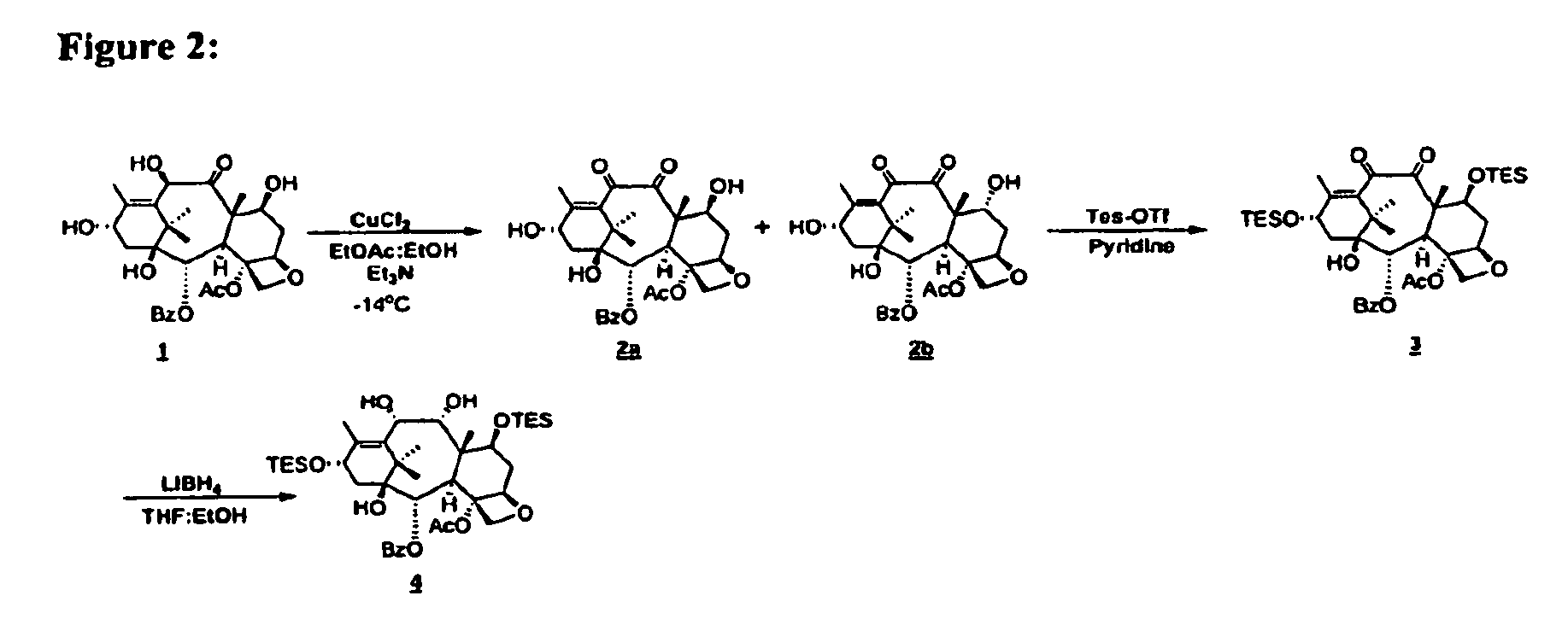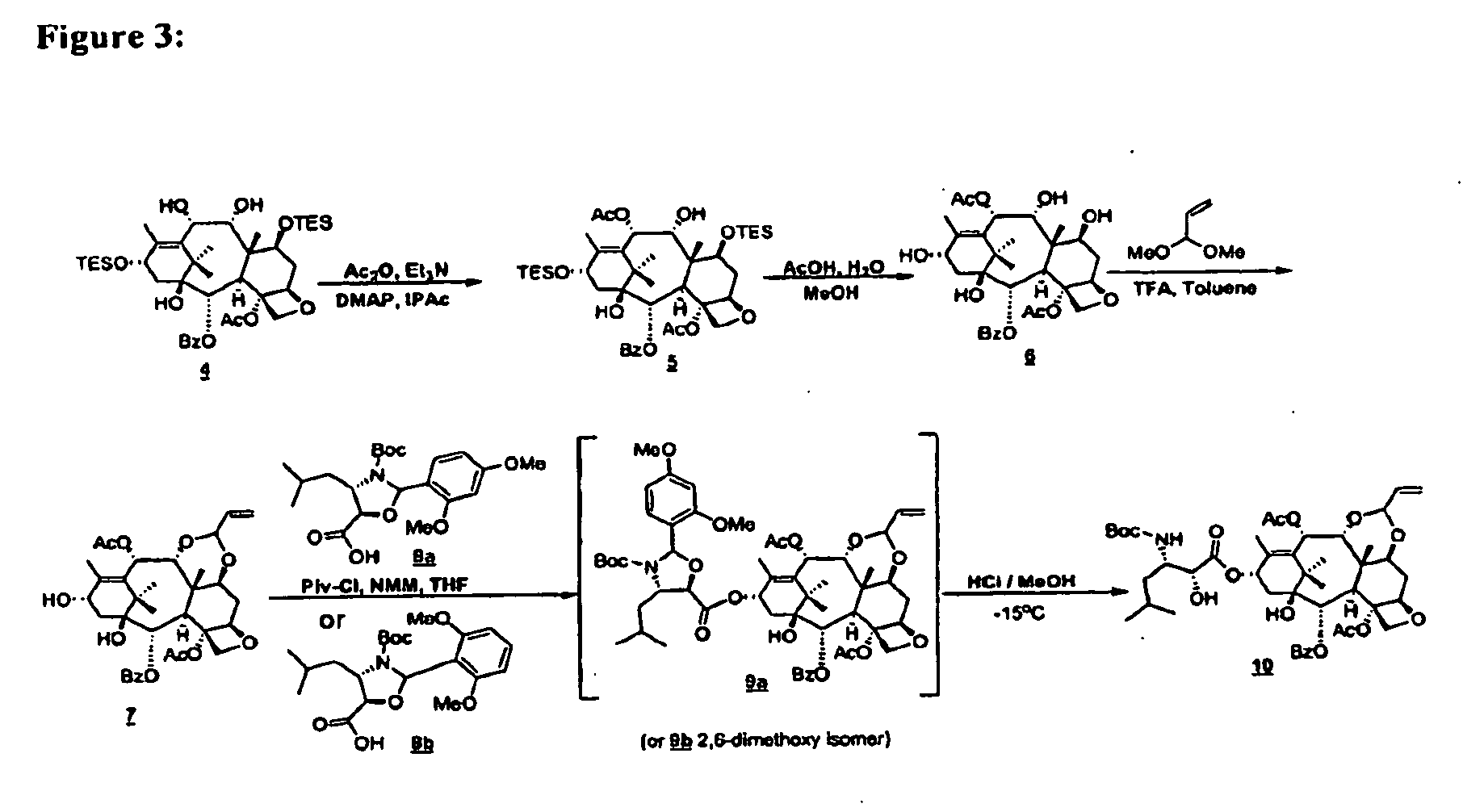Convergent process for the synthesis of taxane derivatives.
a synthesis process and taxane technology, applied in the field of compounding, can solve the problems of difficult esterification or coupling of these two units, difficult synthesis of docetaxel, etc., and achieve the effects of low chemical and mechanical processing steps, high overall yield, and high chemical purity
- Summary
- Abstract
- Description
- Claims
- Application Information
AI Technical Summary
Benefits of technology
Problems solved by technology
Method used
Image
Examples
examples
I. Oxidation of 10 DAB III 1
[0097]A 4 L reaction flask, rinsed with dried EtOAc (300 mL) and held under N2, was charged with dried EtOAc (1250 mL). Agitation was begun and dried 1 (100 g, 0.184 mol) was added. The addition of USP EtOH (800 mL) followed and the reaction mixture was cooled to −1.3° C. (internal temperature). Anhydrous CuCl2 (86.4 g, 3.5 eq) was added and solids from the sides of the flask were washed into the mixture with anhydrous EtOH (450 mL). The reaction mixture was cooled to ≦−13° C. and anhydrous TEA (90 mL, 3.5 eq) was added slowly. The reaction was monitored by HPLC / TLC. At 1 h the reaction was judged complete (<5% 1).
[0098]TFA (36 mL) was added to quench the reaction and stirring continued for 15 min. The reaction mixture was transferred to a 10 L rotovap flask. EtOAc (500 mL) and EtOH (300 mL) were added to the reaction flask, stirred for 2 min and the rinse added to the contents of the rotovap flask, which was evaporated on the rotovap at 40° C. until no f...
PUM
| Property | Measurement | Unit |
|---|---|---|
| temperature | aaaaa | aaaaa |
| temperature | aaaaa | aaaaa |
| temperatures | aaaaa | aaaaa |
Abstract
Description
Claims
Application Information
 Login to View More
Login to View More - R&D
- Intellectual Property
- Life Sciences
- Materials
- Tech Scout
- Unparalleled Data Quality
- Higher Quality Content
- 60% Fewer Hallucinations
Browse by: Latest US Patents, China's latest patents, Technical Efficacy Thesaurus, Application Domain, Technology Topic, Popular Technical Reports.
© 2025 PatSnap. All rights reserved.Legal|Privacy policy|Modern Slavery Act Transparency Statement|Sitemap|About US| Contact US: help@patsnap.com



